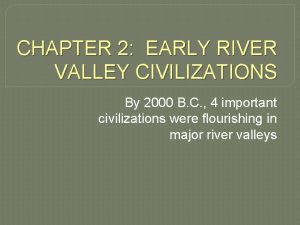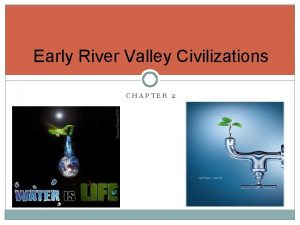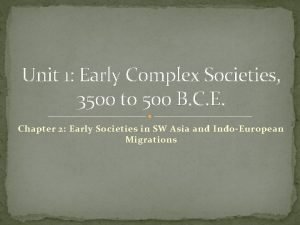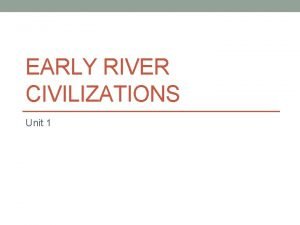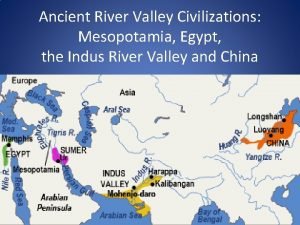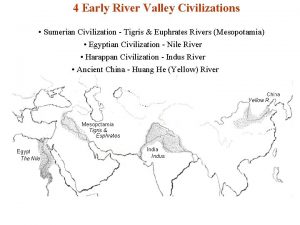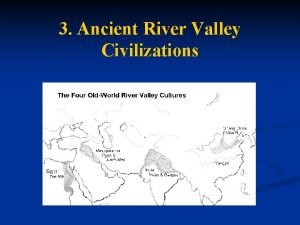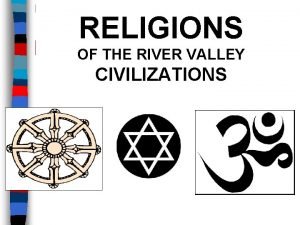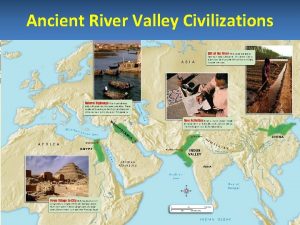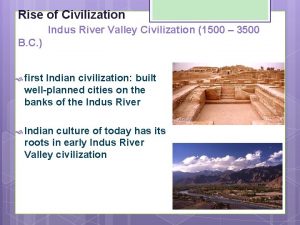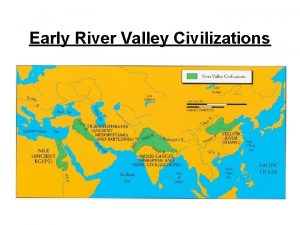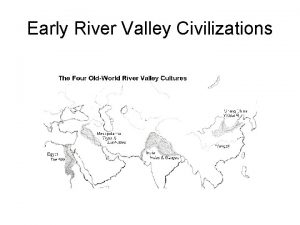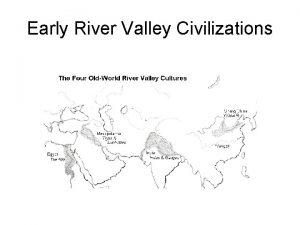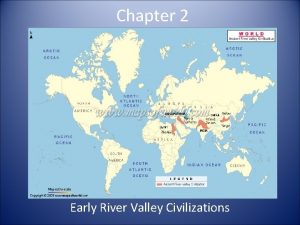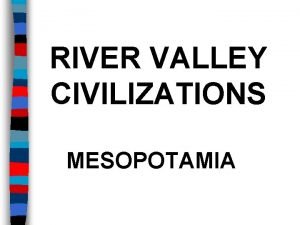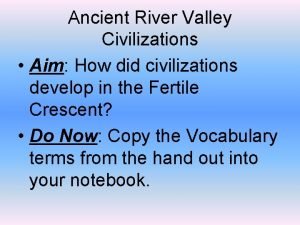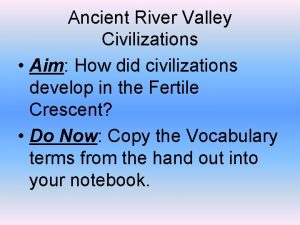EARLY RIVER CIVILIZATIONS AND COMPLEX SOCIETIES AIM What










- Slides: 10

EARLY RIVER CIVILIZATIONS AND COMPLEX SOCIETIES AIM: What are the characteristics of a complex society? Bell Work- Imagine that a new foreign exchange student has moved to Kings Park. What would you tell him or her about American culture? Homework:

Civilization - Official Definition: An organized social structure. The main features of early civilizations, according to some historians: • • cities central government religion job specialization (such as scribes, artisans, priests, etc. ) social classes arts and architecture public works a form of writing

MESOPOTAMIA • Means “between the rivers, ” (the Tigris and Euphrates) • Modern day Iraq • Sumerians were the earliest urban civilization, located in Mesopotamia. • Later, the Babylonians would build upon Sumerian civilization.

SUMERIAN CITY-STATES -Sumerians dominated the region from c. 3200 BCE to c. 2350 BCE -Monumental religious architecture – ziggurats -Created irrigation systems/ Irrigated crops -Created defensive walls and other strategies for defense against nomadic groups -Kings ruled with absolute power Priests were also powerful

WRITING IN MESOPOTAMIA • Cuneiform: “wedge shaped” • Used different pictures to represent objects • Scribes - trained writers • The Epic of Gilgamesh is an epic poem originating from this period and is one of the earliest known literary writings.

BABYLONIANS The Babylonians were a Mesopotamian civilization descended from the Sumerians. The most famous Babylonian king was Hammurabi (c. 1728 – 1686 B. C. E. ) He created the first public, written law code and expanded Babylonian territory in Mesopotamia.

RELIGION IN MESOPOTAMIA • Polytheistic religion with over 3, 600 gods and goddesses • Kings ruled by divine right • Each city-state had a god/goddess • Kings and priests acted on behalf of the gods

EGYPT • Each September, the Nile floods • After the water retreats, soil is fertile and crops grow very well. • Egyptian civilization depended on the predictable flooding of the Nile. • The Nile also produced other natural resources (reeds, copper, stone, clay)

EGYPTIAN BELIEFS • Pharaohs (kings of Egypt) were considered to be gods living on earth. • Egyptians were polytheistic. • The Book of the Dead explained what happens after Egyptians died and called for mummification. • Allowed for detailed knowledge of the human body

EGYPTIAN WRITING • Two writing systems: • Hieroglyphics • Cursive script • Egyptians wrote on papyrus (made from reeds) and carved into stone. • Purposes: kept records, religious writing, secular writing.
 River valley civilizations def
River valley civilizations def Chapter 2 early river valley civilizations
Chapter 2 early river valley civilizations The early complex societies 3500 to 500 b.c.e
The early complex societies 3500 to 500 b.c.e Yellow river civilization map
Yellow river civilization map Ancient river valleys map
Ancient river valleys map River valley civilization map
River valley civilization map River valley civilizations map
River valley civilizations map 4 river valley civilizations
4 river valley civilizations Slidetodoc.com
Slidetodoc.com Ancient river valley civilizations powerpoint
Ancient river valley civilizations powerpoint Seasonal winds that dominate india's climate
Seasonal winds that dominate india's climate
